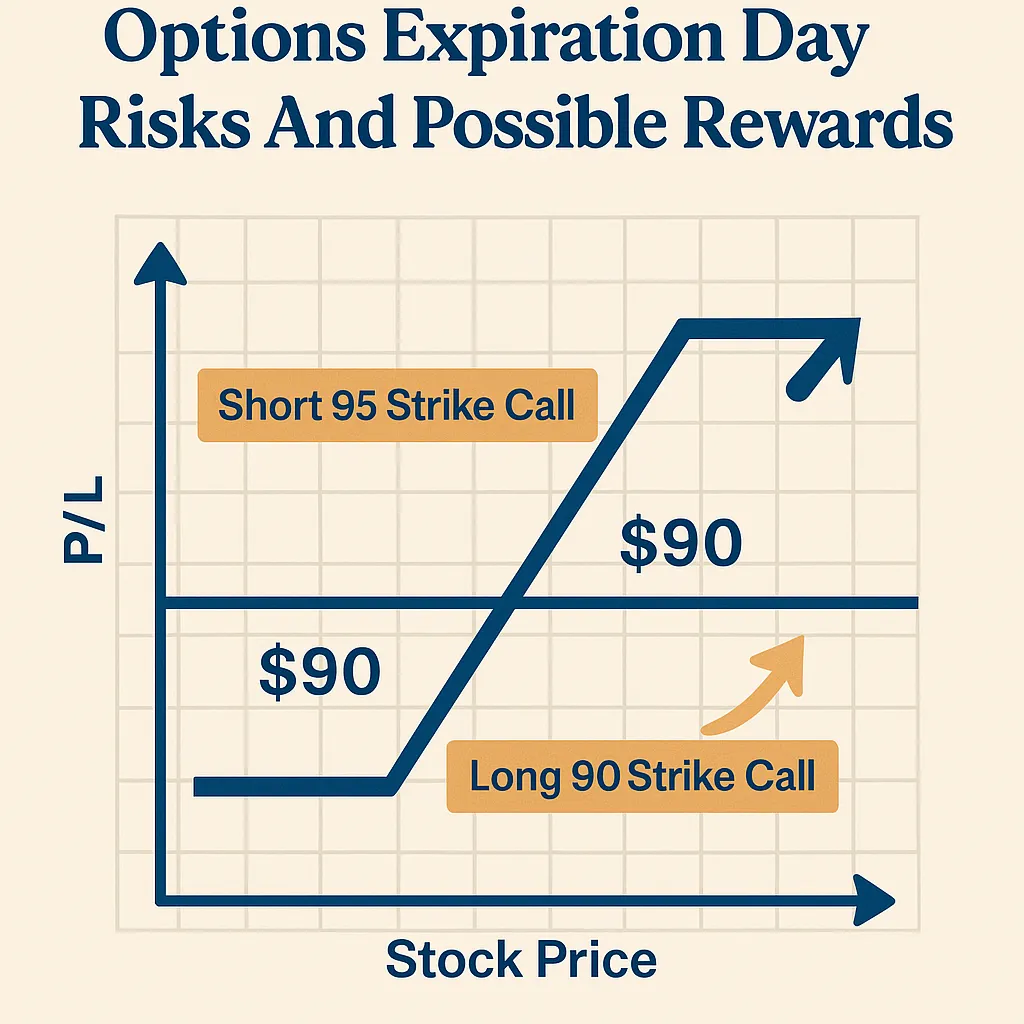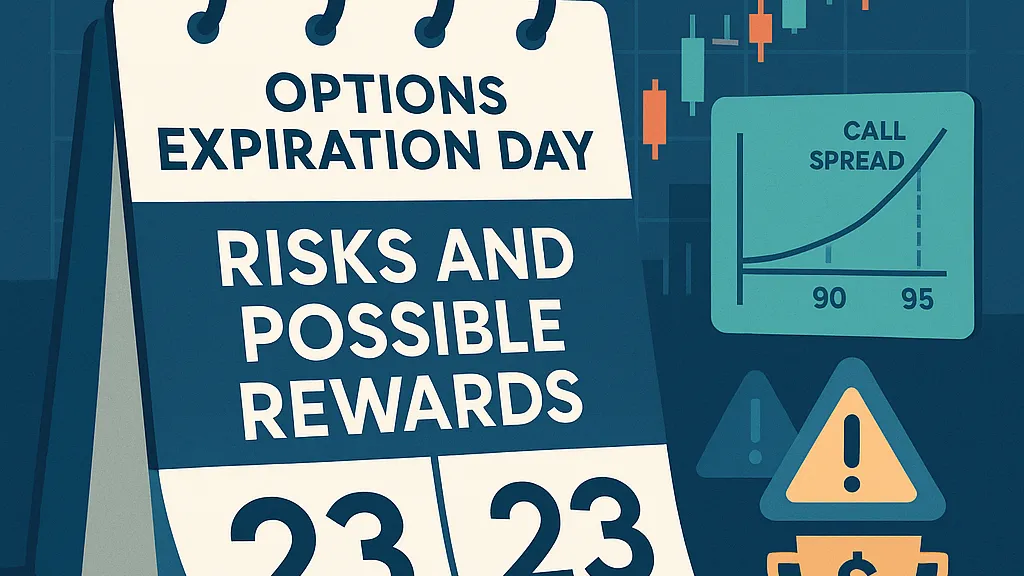Back in the day—think 20 or 30 years ago—options traders, especially market makers in the busy pits of Chicago and other financial hubs, had one day a month they couldn’t miss: options expiration day. It was usually packed with trading action and came with a high chance of volatility. In short, it was a mix of big risks and big opportunities.
Fast forward to today, and things have changed. With the addition of midweek and weekly options, expirations now happen every single day.
If you’re just getting into options and still figuring out how everything works, expiration day can be tricky. Here’s what you should know to steer clear of common mistakes and get a better grip on what expiration day really means.
Basic Options Terminology
- Option holder. If you buy an American-style option, you’ve got the right—but not the obligation—to use it any time up until it expires. A call option lets you buy the underlying stock, while a put option gives you the right to sell it.
- Multiplier. When you buy a call or put option, you pay a premium. To figure out the total cost of the contract, that premium is usually multiplied by 100—since one standard options contract covers 100 shares (though there are some exceptions with non-standard contracts). So, if an option is priced at $1.40, you’d pay $140 for one contract, not counting any fees. That’s $1.40 times 100.
- Expiration. Every option comes with an expiration date—that’s the day the contract ends and is no longer valid.
- Strike price. Each option also has a strike price, which is the set price at which the underlying asset will be bought or sold if the option is exercised.
- Moneyness. Options can be in the money (ITM), at the money (ATM), or out of the money (OTM). An ATM option means the strike price is right around the current price of the stock. A call option is considered ITM if the stock is trading above the strike price, and OTM if it’s trading below. For put options, it’s the opposite—the option is ITM when the stock price is below the strike, and OTM when it’s above.
- Option writer. If you sell (or “write”) an American-style option—whether it’s a call or a put—you could be assigned at any time if the option is in the money before or on expiration day. In some rare cases, it might even happen when the option is out of the money. As the seller, you don’t get to choose if or when assignment happens. If you’re assigned on a short call, you’ll have to deliver shares from your account. If it’s a short put, you’ll need to buy shares into your account.
- Options intrinsic value. This is the gap between the strike price and the current price of the stock. Let’s say a stock is trading at $51 and you have a 50-strike call option priced at $1.40. The intrinsic value is $1—that’s how much the option is in the money. The remaining $0.40 is the extrinsic (or time) value. Out-of-the-money options are made up entirely of extrinsic value.
When Can You Exercise Options? American vs. European?
American-style options can be exercised anytime before they expire, while European-style options can only be exercised on the expiration date. Most U.S. stock options—like those on individual companies—are American-style. On the other hand, many index options, like those on the Nasdaq-100 (NDX), S&P 500 (SPX), and Russell 2000 (RUT), follow the European style.
Also, standard stock options don’t settle in cash—they involve the actual buying or selling of shares if exercised or assigned. But options on broad market indexes are cash-settled, based on the difference between the index’s final price and the option’s strike price, multiplied by the contract size.
How Are Options Settled? Quad and Triple Witching
Every quarter, on the third Friday of March, June, September, and December, stock index futures, stock index options, and stock options all expire on the same day. This event—known as “triple witching”—can lead to a spike in trading volume and sometimes more volatility.
Most index options like SPX, NDX, and RUT settle on Friday morning, but trading for these stops Thursday afternoon. The official settlement price isn’t calculated until Friday morning and isn’t just the index’s opening price. Instead, it’s based on the first trade of each stock in the index, known as “the print.”
Now, if something big happens in the market overnight between Thursday and Friday morning, it can impact that opening price. That’s called print risk, and it’s a unique concern for AM-settled options.
PM-settled options, on the other hand, trade through the end of the day and settle based on the closing value of the stock or index. On expiration day, trading for most PM-settled options wraps up at 3 p.m. CT, though some broad-based ETF options keep going until 3:15 p.m. CT.
Fun Facts & FYI
On expiration day, if your option is in the money by even just $0.01 at the 3 p.m. CT price, it’ll usually be exercised automatically. In general, you have until 4:30 p.m. CT to decide whether to exercise it yourself. These deadlines are set by the Options Clearing Corporation (OCC), but some brokers might require you to act sooner.
If your in-the-money option expires and you don’t have enough funds in your account to cover the resulting stock position, your broker might step in and file a “do not exercise” (DNE) on your behalf. If that happens, you lose whatever profit you could’ve made by exercising. Any option holder can also submit a DNE if they don’t want the option to be automatically exercised.
In some cases, your broker might even close the position for you—possibly without warning. As for out-of-the-money options, they just expire worthless.
What To Do On Options Expiration Day?
Everyone loves a long weekend—unless you end up holding a position you didn’t mean to take because of an options expiration slip-up. That stretch from Friday’s close to Monday’s open can feel like the longest wait ever if you’re stuck with something you didn’t plan for.
Now that you’ve got a handle on the basics, here’s a checklist to help you avoid last-minute surprises around expiration:
Do your homework. Are there any earnings reports, ex-dividend dates, or news announcements coming up for companies tied to your expiring options?
Know the details. Are your options American-style or European-style? Do they settle in the morning or afternoon? What time do they stop trading? And does the underlying stock trade outside regular market hours? For instance, if an option is in the money (ITM) at the close, it usually gets exercised automatically. But if the stock price shifts after hours, something you thought was out of the money (OTM) could flip to ITM—and if someone chooses to exercise it, you might end up with a surprise position. On the flip side, there’s no guarantee you’ll be assigned on an ITM short option either.
Be ready—or close it out. To avoid margin calls or weekend exposure, make sure you’ve either got enough cash to cover any potential stock purchase or you’ve closed out the position ahead of time. For example, if you plan to exercise a long call, you’ll need enough money in your account to buy the shares. If you’re using margin, you need to meet the Reg T requirements. If you’re not sure—or don’t want the stock—it’s usually safest to close the position before the market closes. Just keep in mind, liquidity isn’t always guaranteed.
Give yourself some breathing room. As expiration draws near, especially close to 3 p.m. CT, trading can thin out and bid/ask spreads might widen. If you’re thinking about closing a position or rolling it to a future date, don’t wait until the last minute. Acting a little earlier could save you some stress.
Options Expiration Day Risks And Possible Rewards
Here’s one last thing to keep on your expiration checklist: Know your risk.
Take a look at a long vertical call spread, for example. This involves buying a 90-strike call and selling a 95-strike call. If the stock finishes below $90 at expiration, both options will most likely expire worthless—no harm, no foul.
But if the stock closes above $95, things get a bit more interesting. In a typical case, your 90-strike call gets exercised and your 95-strike call gets assigned. That means you buy the stock at $90 and sell it at $95, closing the spread with no stock position left behind.
However, there’s a catch. If the holder of the 95-strike call decides to submit a Do Not Exercise (DNE) request, you might not get assigned. If that happens, your 90-strike call still gets exercised, and you could be stuck holding the stock at $90—something you might not have planned for.

Risk Profile of a Vertical call spread
But what happens when the stock price lands somewhere between the strike prices—or hovers right around $90 or $95? Will you end up with a position or not?
If your 90-strike call is in the money and the 95-strike call is out of the money at expiration, the 90-strike will likely be exercised automatically, while the 95-strike expires worthless. That means you’d be buying the stock at $90—unless you sell the spread ahead of time or submit a Do Not Exercise (DNE) request for the 90-strike call.
If the stock is trading close to either strike, and you don’t want to risk getting the shares (or ending up with an assignment you weren’t expecting), your best move is probably to close the position before expiration or get that DNE request in with your broker.
Now that you’re familiar with how expiration works and what to watch out for, you’re better equipped to handle the risks. It’s not a bad idea to keep this checklist around as a quick reminder.
Disclaimer: This post is for educational purposes only and is not financial, legal, or tax advice. Do your own research or consult a qualified professional before making any decisions.
Affiliate Disclosure: GetJoeMoneyRight.com is a participant in the Amazon Services LLC Associates Program, an affiliate advertising program designed to provide a means for sites to earn advertising fees by advertising and linking to Amazon.com and affiliated sites.

